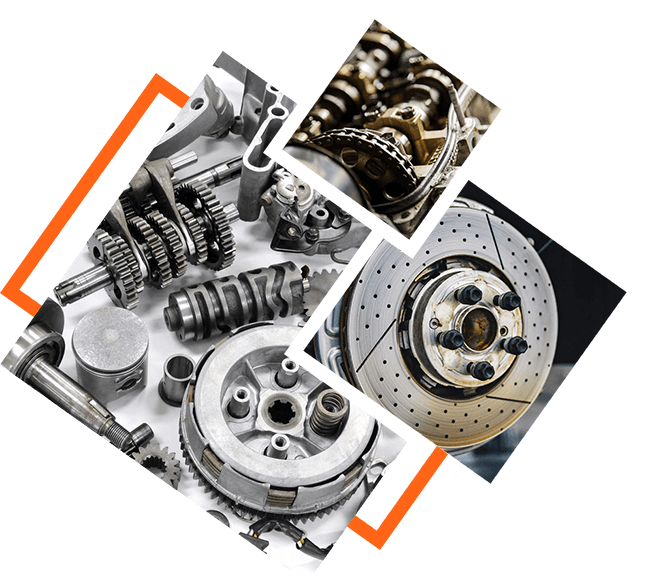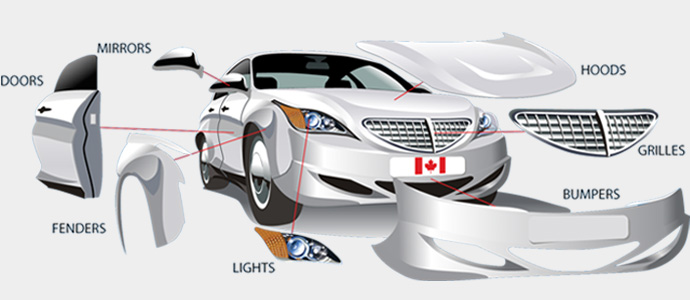If you’re deciding between new or used car parts the condition is crucial to the performance, price, and longevity. Below are the top ten tips to consider along with their pros, cons and benefits:
1. Understanding the significance and importance of the part
Tip: Prioritize the purchase of new components for critical safety elements (such as steering or brakes).
The benefits: New parts ensure the reliability of the system and lower the risk of failure.
Cons: Buying used parts can be cheaper, but they could not be safe for your system.
2. Consider the wear and tear issue
Tips: Think about the way wear on the component impacts the performance of the part. For example, fresh belts, bearings or filters are more efficient.
New components ensure the highest performance and durability.
Pros: Parts that are that are in good condition could have a shorter lifespan.
3. Determine the length of the parts’ life
Tips: If searching for components with longevity for example, the body panels or rims (e.g.) or rims, then used components may be the best choice.
Advantages: Used products can offer significant savings while still delivering their functionality.
Pros: There are some issues that are difficult to spot (like damaged or hidden rust) could only come to light in the near future.
4. Inspection of Used Parts
Before buying used parts, inspect them for cracks, corrosion, or excessive wear.
Pros: Ensures that used parts conform to minimum standards of quality.
Pros: Used parts can’t be thoroughly inspected, especially when purchased on the internet.
5. Find out if the item is available as new or used
Make use of used parts to fill in the gaps in your collection if you aren’t able to find new parts or they’re excessively costly.
Benefits: Keeps the vehicle in operation continuously.
Cons: Replacement could be needed earlier than with the new part.
6. Check the history and compatibility of parts.
Tips: Ensure that the item you’re using is compatible with your vehicle and comes with a an impeccable service history.
Pros: Reduces the chance of purchasing a component that isn’t a good fit or in a bad condition.
Cons: The lack of information on the history of certain used components can lead to confusion.
7. Consider Refurbished and Rebuilt Parts
Tip: Refurbished (e.g. transmissions and alternators) parts can be an economical alternative to brand new.
Pros: Cost-effective with improved performance compared to the use of components.
Cons: Quality depends on refurbishing and vendor reputation.
8. Budget Constraints
Used parts can be a good option for parts that are not essential (like interior trim and accessories).
Pros This product is cost effective and is functionally appropriate.
Cons: Older components might not be as effective or appear as good as new parts.
9. Make sure you have a Warranty.
You can also get limited warranties on used parts if you buy them from trusted sellers.
Pros: Gives security in the case of defects or failures.
Pros: Parts with warranties that are in use can be costly and difficult to find.
10. Recognize the Impact of Resale Value
Tips. New components are a fantastic method to boost the worth of your vehicle especially for major repairs.
Pros: Vehicles that have quality replacements are more reliable for buyers.
Cons: Car parts that are used may not be perceived as having the same value.
Consider the pros and cons.
The benefits of new parts
Performance, durability, and compatibility are guaranteed.
Of course, these products are covered by warranties provided by the manufacturer.
Choose this for your critical systems to maximize resale values.
Pros and Cons of New Parts
The high upfront cost
Some older or rarer cars may be difficult to find.
The use of components has numerous benefits:
It is cost-effective for all parts however, it is particularly the non-critical ones.
Easily available for older models and discontinued models.
Eco-friendly materials (recycled existing materials)
Contradictions of used parts
Greater risk of damage and wear.
Limited or no warranty
Requires careful inspection to ensure quality.
These suggestions can help you make the right choice of buying new or used parts for your vehicle. Check out the top rated ventilacija car parts par wiesmann cars for more info including spare parts by vin number, aur parts, c auto parts, rezerves dalas riga, àuto parts, Keyword Stats 2025-01-22 at 16_49_43, auto auto salvage, checker auto, cac parts, pv auto parts and more.

The Top 10 Things To Think About About Particular Considerations For Advanced Systems
When you are purchasing replacement parts it is important to consider the latest systems in cars such as electronic components, sensors, and other technological elements. They have special requirements that distinguish them from other vehicles. Here are 10 key tips with pros and cons to think about:
1. Understanding the Complexity of the System
Prior to purchasing parts, make sure you know the complexities and functions of the advanced systems (e.g. informationtainment systems, adaptive cruise control, or collision avoidance systems).
Pros: Understanding the nuances will help you avoid purchasing incompatible components.
Cons: A lot of advanced systems require specialist expertise, which can lead to higher costs for repair and replacement.
2. Verify compatibility with the Vehicle Software
Tips: Make sure the part is compatible or not with the software on the car (e.g. the ECU, the firmware, or the sensors). Certain parts will need a software update or calibration.
Pros: It allows seamless integration with the system.
Cons: It can be costly and hard to fix software-related problems, especially when updates are required.
3. Advanced Systems: Compare OEM and Aftermarket
Tips – For high tech parts OEMs (Original Equipment Manufacturers) are often required to guarantee full function. But, aftermarket components may lack certain functions.
Pros: OEM parts provide guaranteed compatibility and maintain the system’s integrity.
Cons: OEM parts may be quite expensive compared to aftermarket alternatives.
4. Find Integrated or Modular Systems
Tip: Many advanced systems have multiple components, that means they have to be used in conjunction. Make sure you have the right components for the system to function properly.
Pros: Modular products are simple to repair or upgrade.
Cons: A lack of understanding about modularity could lead to inadequate repairs or increased cost for parts that are not included.
5. The impact of a vehicle warranty
Tip: Prior to replacing electronic components or other parts of a sophisticated system, check whether the replacement will affect your vehicle’s warranty.
Cons: Does not affect your warranty as long as the replacement was performed in a correct manner.
Pros: Certain components could void warranties if incorrectly replaced or if parts that are not approved by the manufacturer are employed.
6. Take into consideration the need for calibration or reprogramming
Tip: Advanced parts like sensors, cameras or ECUs could require calibration or reprogramming after installation. Make sure you have the right tools or know-how to deal with this.
The benefits of proper calibration are that the system operates correctly.
Cons: Calibration may be expensive, time-consuming and requires specialist knowledge or equipment.
7. Verify that the part conforms to the rules.
Tip. When you are considering advanced systems involving emissions, safety or driver assistance technologies ensure that the components conform to industry regulations and standards (e.g. CARB for emissions).
Cons: Does not ensure legal compliance or safety.
Cons: Regulatory-compliant components might be more expensive and harder to obtain.
8. Prioritize brands with expertise in Advanced Technology
Tip: Select parts from manufacturers recognized for their expertise in the field of the latest technology in automotive systems, like active safety and infotainment.
Cons: Complex systems require components with higher quality and reliability.
Pros: Generic products might be cheaper than the most reputable brands.
9. Be sure to check for any the latest updates to your system, or recalls
Tip: Research whether the system component you’re purchasing has known updates or recalls. Manufacturers sometimes release updates for their cars to boost system performance.
Pros: It ensures that you’re getting the most current version of the component, and avoiding faulty components.
Cons: Recalls, updates and delays can delay the purchase.
10. Factor Integration to Other Vehicle Features
Tip: Some advanced systems interact with other components of the vehicle (e.g. lighting, HVAC, or powertrain). Make sure that the system chosen integrates seamlessly with the other systems.
Pros Well-integrated systems guarantee seamless operation and can help avoid issues in the long run.
Cons: integrating multiple systems can make installation more difficult and troubleshooting.
Final Thoughts on Weighing Pros & Cons
Consideration of Advanced Systems as special Systems:
Continuous Performance: This ensures that the system integrates with the car and performs properly.
Safety and compliance: Keeping the compliance of regulatory agencies, while cutting down on safety risks.
Long-term value: If properly calibrated and installed, the latest systems of the vehicle are able to maintain its value and functionality.
Cons of not taking specific Considerations into Account:
Costs for upfront expenses that are more expensive due to their complexity branding, image, or the regulatory requirements, advanced parts are often more expensive.
Installation and Maintenance Can Be complex: Certain systems require expert installation or maintenance. This may be due to the need for specific tools, expertise or services.
Risk of System Failures The wrong choice of and installation of components could cause system malfunctions which could result in costly repairs and safety risks.
These sophisticated system evaluations can assist you in making an informed decision that is balanced between costs, compatibility, and functionality and makes sure your vehicle’s sophisticated systems run smoothly. See the most popular heater parts for jaguar cars for site info including gadi ke parts, auto parts on greenfield, auto 2 parts, and auto parts, bmv parts, auto pickers, auto parts bmw, latvia auto parts, checker auto parts, àuto parts and more.
